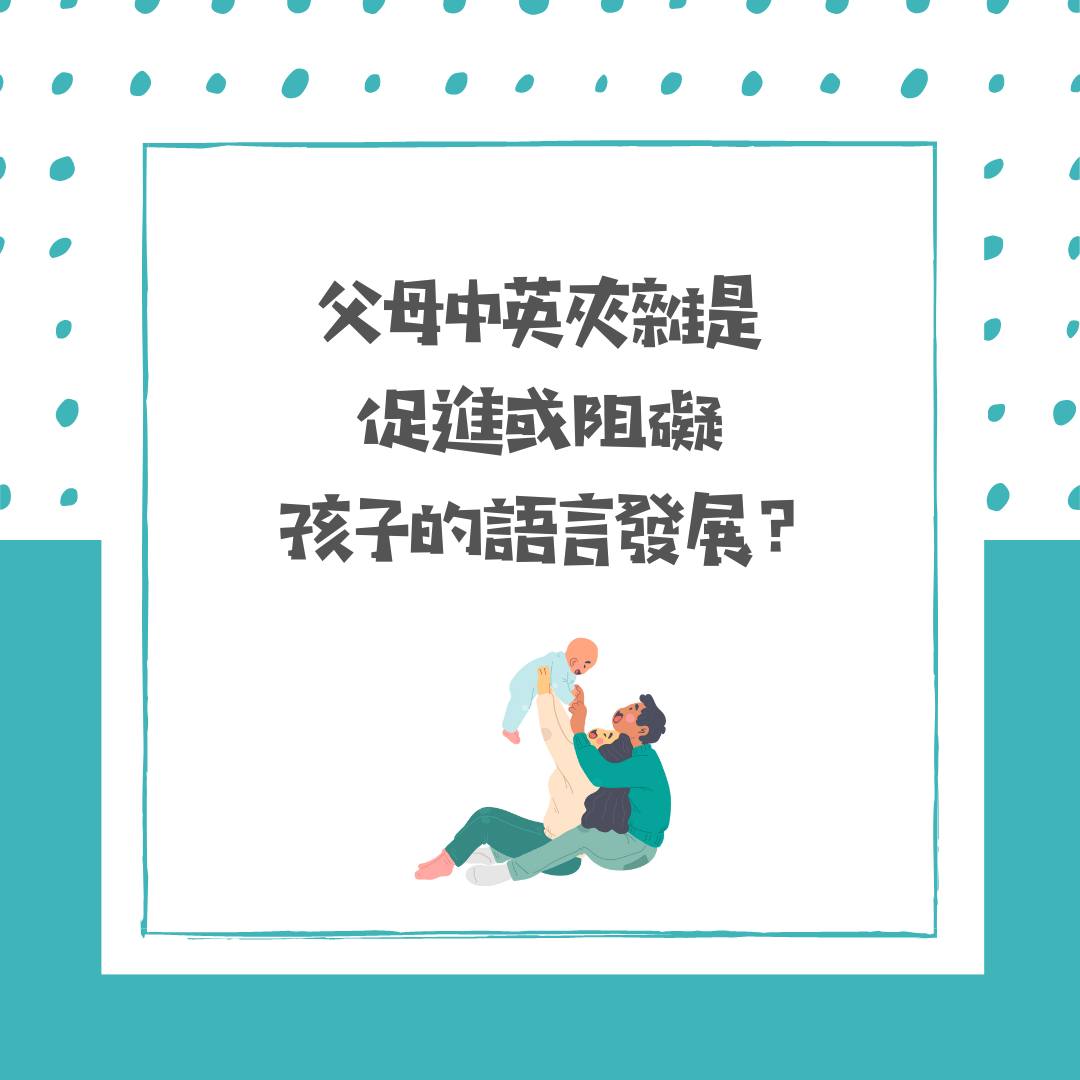在語言學中,中英夾雜是語碼轉換(code switching)的一種,即是在對話中交替使用兩種或以上的語言。至今,有關於語碼轉換與雙語兒童語言表現之間的關係的研究不算多,而且它們的結果並不一致,因此令人感到相當困惑。
Place and Hoff (2011; 2016) 指父母在說話中轉換語碼和他們的雙語孩子的語言能力無關。
不過,Byers-Heinlein (2013)的研究發現當父母混合使用語言的頻率愈高,孩子在理解和表達方面的詞彙量會愈小。Lipsky (2013)也得出相似的結果,當老師在閱讀故事的過程中出現愈多語碼轉換,兒童的理解詞彙量會愈小。
相反,Bail et al. (2015)則表示,當父母有愈多語碼轉換,孩子的詞彙量會愈大。
由此可見,過往的研究結果出現矛盾,這是否代表著有其他因素影響著兒童的語言能力發展,以致他們在面對父母的語碼轉換時有不同的反應?
Kaushanskay and Crespo (2019)正正探討了語言工作記憶(verbal working memory)的影響,他們招募了近200名年約8歲的雙語兒童(西班牙語及英語),和他們進行了一系列的語言測試,他們從家長身上了解父母出現語碼轉換的頻率。他們在分析數據的過程中控制了母親接受教育的年數、語言接觸(exposure)和習得年齡(age of acquisition)的影響,然後得出以下結果。
就語言工作記憶較好的兒童而言,當他們在父母身上接觸得較多語碼轉換,他們的語言能力會較好。這可能是因為語碼轉換可以突顯對應的翻譯內容,從而促進兩種語言中各自的詞彙習得(vocabulary acquisition) (Bail et al., 2015)。
相反,若兒童的語言工作記憶較差,當他們接觸得較多語碼轉換時,他們的語言能力則會較差。這或是因為理解包含語碼轉換的說話內容比理解單一的語言輸入更具挑戰性 (Butlena et al., 2015)。 他們總結,要知道父母的語碼轉換行為到底是促進或阻礙語言發展,兒童的言語工作記憶能力有一定影響力,不過他們也強調他們不認為言語工作記憶能力是唯一調節因素,他們提出了其他可能的因素,例如:認知技能中的抑制控制(inhibitory control)和語音短期記憶(phonological short-term memory)、兩種語言各自的水平、兒童自發語碼轉換的表現等,要知道這些因素是否真的有影響,這便要看看未來的研究結果了。
Reference
Bail, A., Morini, G., & Newman, R. S. (2015). Look at the gato! Code-switching in speech to toddlers. Journal of Child Language, 42, 1073-1101.
Bultena, S., Dijkstra, T., & Van Hell, J. G. (2015). Language switch costs in sentence comprehension depend on language dominance: Evidence from self-paced reading. Bilingualism: Language and Cognition, 18(3), 453-469.
Byers-Heinlein, K. (2013). Parental language mixing: Its measurement and the relation of mixed input to young bilingual children's vocabulary size. Bilingualism: Language and Cognition, 16, 32-48.
Kaushanskaya, M., & Crespo, K. (2019). Does exposure to code‐switching influence language performance in bilingual children?. Child Development, 90(3), 708-718.
Lipsky, M. G. (2013). Head Start teachers’ vocabulary instruction and language complexity during storybook reading: Predicting vocabulary outcomes of students in linguistically diverse classrooms. Early Education and Development, 24, 640-667.
Place, S., & Hoff, E. (2011). Properties of dual language exposure that influence 2‐year‐olds’ bilingual proficiency. Child development, 82(6), 1834-1849.
Place, S., & Hoff, E. (2016). Effects and noneffects of input in bilingual environments on dual language skills in 2 ½-year-olds. Bilingualism: Language and Cognition, 19(5), 1023-1041.




.jpg)